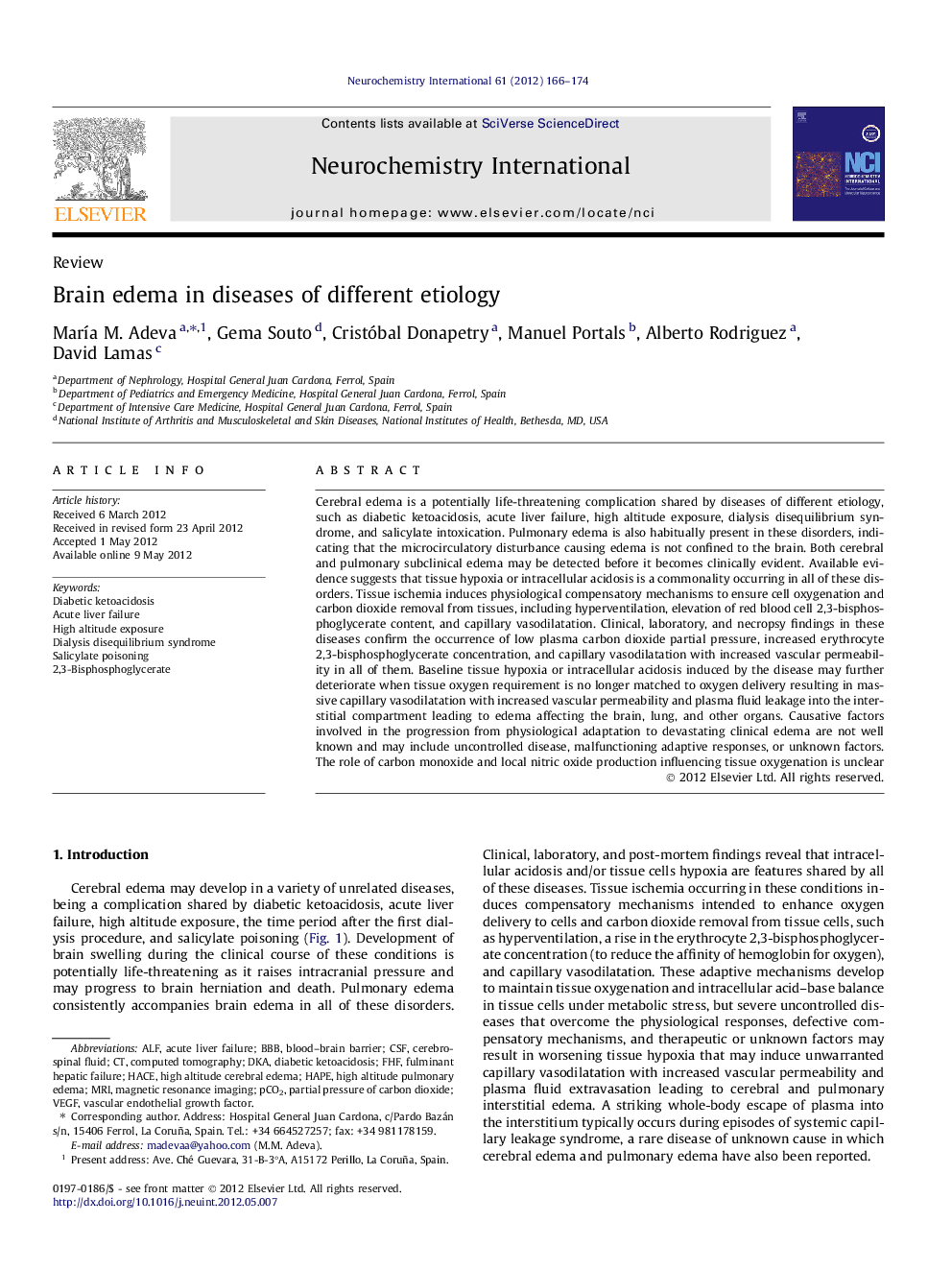| کد مقاله | کد نشریه | سال انتشار | مقاله انگلیسی | نسخه تمام متن |
|---|---|---|---|---|
| 2200777 | 1099971 | 2012 | 9 صفحه PDF | دانلود رایگان |

Cerebral edema is a potentially life-threatening complication shared by diseases of different etiology, such as diabetic ketoacidosis, acute liver failure, high altitude exposure, dialysis disequilibrium syndrome, and salicylate intoxication. Pulmonary edema is also habitually present in these disorders, indicating that the microcirculatory disturbance causing edema is not confined to the brain. Both cerebral and pulmonary subclinical edema may be detected before it becomes clinically evident. Available evidence suggests that tissue hypoxia or intracellular acidosis is a commonality occurring in all of these disorders. Tissue ischemia induces physiological compensatory mechanisms to ensure cell oxygenation and carbon dioxide removal from tissues, including hyperventilation, elevation of red blood cell 2,3-bisphosphoglycerate content, and capillary vasodilatation. Clinical, laboratory, and necropsy findings in these diseases confirm the occurrence of low plasma carbon dioxide partial pressure, increased erythrocyte 2,3-bisphosphoglycerate concentration, and capillary vasodilatation with increased vascular permeability in all of them. Baseline tissue hypoxia or intracellular acidosis induced by the disease may further deteriorate when tissue oxygen requirement is no longer matched to oxygen delivery resulting in massive capillary vasodilatation with increased vascular permeability and plasma fluid leakage into the interstitial compartment leading to edema affecting the brain, lung, and other organs. Causative factors involved in the progression from physiological adaptation to devastating clinical edema are not well known and may include uncontrolled disease, malfunctioning adaptive responses, or unknown factors. The role of carbon monoxide and local nitric oxide production influencing tissue oxygenation is unclear
► Brain and pulmonary edema are complications of diseases of different etiology.
► All of these conditions feature tissue hypoxia or intracellular acidosis.
► Tissue ischemia elicits compensatory mechanisms.
► Marked capillary vasodilatation may occur in response to tissue ischemia.
► Necropsy findings confirm cerebral hypoxic changes and capillary vasodilatation.
Journal: Neurochemistry International - Volume 61, Issue 2, July 2012, Pages 166–174